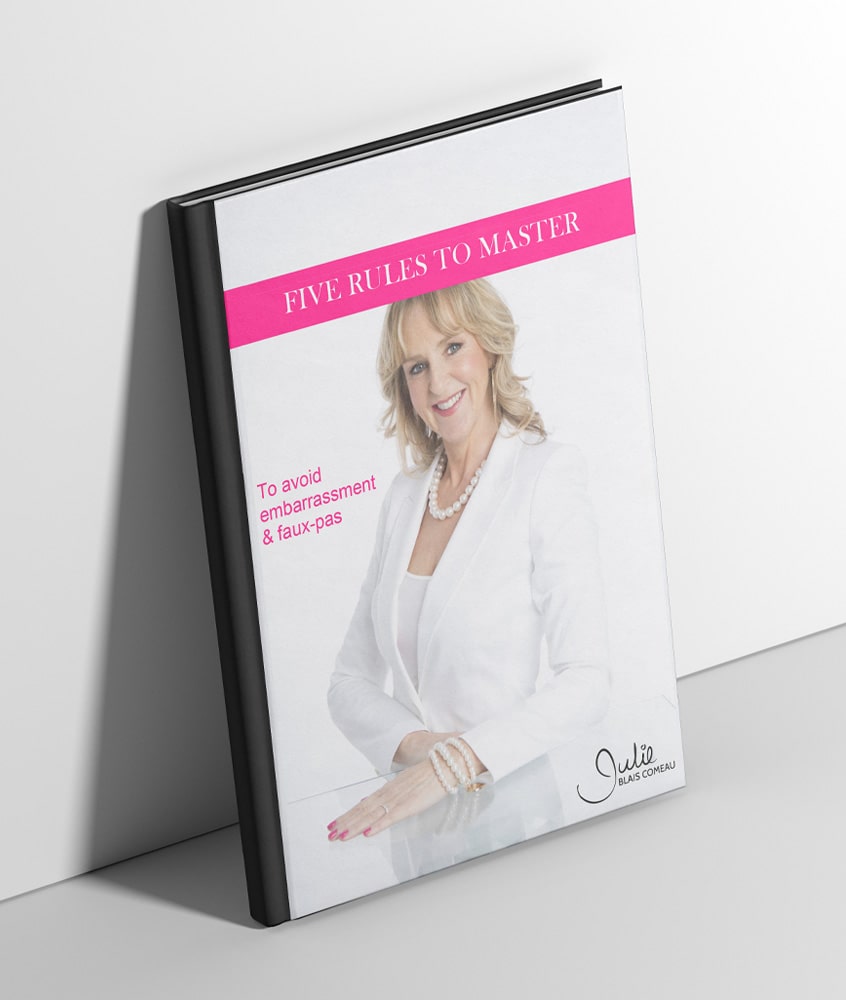
Back to work could mean back to boring meetings. Meetings often have a bad reputation. Although all agree that they are necessary to share information and develop or enhance team cohesion, many consider them boring, a waste of time and even a bad investment.
Meeting host or participant, here are 12 recommendations to ensure that all your meetings are productive and focused.
When you are hosting the meeting
Every meeting must have its “raison d’être”. Without a clear mission, don’t hold a meeting. Just because you have a designated assigned time, when all are seated, and you begin the meeting by saying: “Does anyone have anything new to discuss?”, all will sigh and roll their eyes.
Put the meeting’s purpose on the agenda. State it again at the onset of the meeting. It shows the seriousness of the gathering.
Clearly announce the participation expectations, as well as desired actions by whom, during and after the meeting.
Use a template to format the agenda. It should clearly identify its’ purpose and define the participation expectations. A successful meeting is accurate and realistic. Indicate the duration of the interventions.
With the invitation, attach relevant documents.
Many companies favour a rotation within the team.
The minutes of a meeting should be standardized and provide an overview of the progress of each project.
The report must answer the following questions:
Send the minutes to participants within 24 hours of the meeting.
Add to the agenda your expectations for mobile device usage.
“Please silence your devices.” “This meeting will be a techno-free time.”
Re-announce this expectation at the onset of the meeting.
Invite only those who need to be present and make sure that those that have the decision-making power are in the room, on the phone or on videoconference.
Be realistic about the length of the meeting and the number of items on the.
Allow time for brainstorming, discussion and questions while remembering these wise words from Winston Churchill in The Crown:
“There is one thing I learned in 52 years of public service, it’s that there is no such complex problem or crisis so serious that cannot be solved satisfactorily in 20 minutes.”
Assign seats strategically. If necessary, use name tents, including roles and companies.
The chairperson, the CEO or the highest-ranking person in the organizational hierarchy normally sits at the end of the table, with a view of the door. The second most important person faces him. If a guest of honour is present, he must be seated to the right of the person chairing the meeting. The second most important persons sits on the left.
Temper the room. 20 to 22 degrees Celsius is the ideal temperature to ensure comfort and concentration.
If you use a screen, make sure everyone can see.
Start on time. Do not, I repeat, do not, wait for latecomers and never repeat what you have already. It is disrespectful to those that were on time.
A good meeting involves good time management. Everyone will be delighted with the extra time they will have to answer emails, make a call or go for a walk.
When you are one of the participants
If you can’t be present, explain why. A phone call is better than an email. It avoids misunderstandings.
Print the agenda. Add your notes. Bring all necessary documents including notetaking material. I know, it’s basic. But it’s not uncommon for me to have to loan paper and pen to an unprepared participant.
Respect others’ personal spaces. Don’t spread out your stuff. Stay within your boundaries.
Don’t slouch. Your posture is the number one visual element to broadcast confidence and credibility.
Be wary of relaxing movements that may relax you, but that disturb others; like clicking your pen, shaking your leg or even chewing gum.
If you have nothing new to present, don’t rephrase other’s comments. It’s annoying and a waste of time.
The magic words do have a positive impact on the tone of the meeting as well as your relationships. Use them.
Be open to the perspectives of others. Do not interrupt. No side chats. No rolling of the eyes. No sighing.
If you have a conflict to resolve, do it privately.
If you have to leave early, let the host and the organizer know ahead of time and leave discreetly and quietly.
Productive meetings require Preparation, Planning, Positivity, and Performance analysis. Follow these 4 Ps and all will look forward to your next meeting.
Want more productive meeting tips? Watch this video or invite Julie in for an interactive conference.
Are you in a sticky situation? This blog is at your service. Write to me at julie@julieblaiscomeau.com. Your situation may enlighten other readers.
Translation from published September 1, 2018 Journal du Barreau du Québec (c) Julie Blais Comeau
